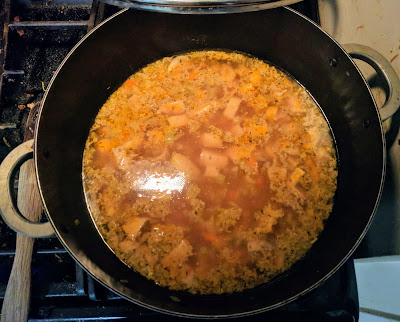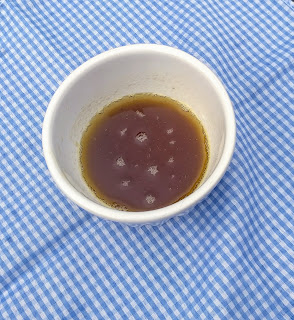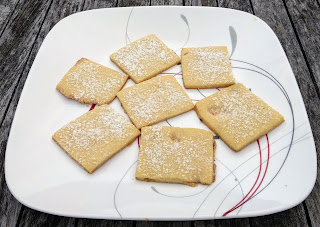Gelatinous Ooze Custard
The name may not sound terribly appealing but, if you can get past that, the dish itself is wonderful. It is a simple, cooked vanilla custard topped with a golden crust of caramelized sugar. I believe "crème brûlée" would be the Terran equivalent. And, I have to admit, "burnt cream" doesn't sound much more appealing than "gelatinous ooze", so maybe there's just something about this dessert that inspires lackluster names.
The custard itself, you'll be pleased to know, does not include any oozes of any kind. As far as I can tell the name is derived from the torching process which traditionally involved the gall bladder of some of the more common ooze species. The organ contains many volatile compounds that can readily be set alight and directed at the desired target. A careful hand can produce a strong and long-burning flame. It is a tricky process, the virtue being that it can be done with nothing but the ooze and something to spark the flame (and perhaps a glove for the squeamish).
These days more precise, easier to handle torches have been developed. Chefs don't want to have to keep ooze gall bladders on hand and would rather reach for a (significantly less slimy) purpose-made tool. But, as with so many things, the name does not necessarily change with the times. And so we have "gelatinous ooze custard", even though it's been a few decades since anyone but the most steadfastly traditional have made it that way.
1 Normally this would be done with table (18%) cream. I only had half-and-half (10%) on hand though and found that it still produced acceptable results. Back
2 Usually I prefer to use vanilla extract as it is more convenient. For this, I prefer to use a whole vanilla bean. If you are using extract, you will need ~1 Tbsp. and it should not be added until after the custard has been taken off the heat. Back
3 The traditional recipe does not include any starch. However, I find that a little bit helps the custard set up nicely and gives more consistent results. Back
The custard itself, you'll be pleased to know, does not include any oozes of any kind. As far as I can tell the name is derived from the torching process which traditionally involved the gall bladder of some of the more common ooze species. The organ contains many volatile compounds that can readily be set alight and directed at the desired target. A careful hand can produce a strong and long-burning flame. It is a tricky process, the virtue being that it can be done with nothing but the ooze and something to spark the flame (and perhaps a glove for the squeamish).
These days more precise, easier to handle torches have been developed. Chefs don't want to have to keep ooze gall bladders on hand and would rather reach for a (significantly less slimy) purpose-made tool. But, as with so many things, the name does not necessarily change with the times. And so we have "gelatinous ooze custard", even though it's been a few decades since anyone but the most steadfastly traditional have made it that way.
 |
| Please excuse the uneven browning; I have neither a torch nor an ooze and was attempting to do this under an oven broiler. |
Gelatinous Ooze Custard
Ingredients
Directions
- Open the vanilla pod, scrape out all the paste, and add this to the cream. (Toss the empty pod into your sugar bowl to create wonderful, vanilla-infused sugar.
- Scald the cream by bringing it nearly, but not quite, to a boil.
- Meanwhile, beat the egg yolks with 100g of the sugar until pale and somewhat fluffy (~3 minutes).
- Mix the cornstarch into the eggs.
- While beating, slowly pour the hot cream into the egg mixture.
- Cook custard over medium-low heat, whisking constantly, until thickened.
- (Optional) Strain the custard to remove any lumps.
- Pour into a pie plate or several small ramekins, cool, and then chill for at least four hours.
- Once thoroughly chilled sprinkle the remaining 100g sugar over the surface of the custard.
- Melt the sugar via your preferred method (either a torch or an oven broiler). If using the broiler, you'll need to keep a close eye on it and turn and shift the custard(s) to get them as evenly browned as possible.
- Once the sugar as melted and nicely caramelized, set aside to cool.
- Served chilled.
1 Normally this would be done with table (18%) cream. I only had half-and-half (10%) on hand though and found that it still produced acceptable results. Back
2 Usually I prefer to use vanilla extract as it is more convenient. For this, I prefer to use a whole vanilla bean. If you are using extract, you will need ~1 Tbsp. and it should not be added until after the custard has been taken off the heat. Back
3 The traditional recipe does not include any starch. However, I find that a little bit helps the custard set up nicely and gives more consistent results. Back



Comments
Post a Comment